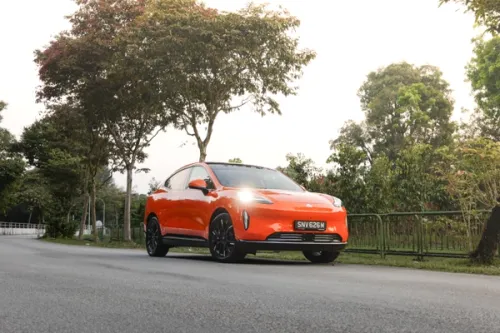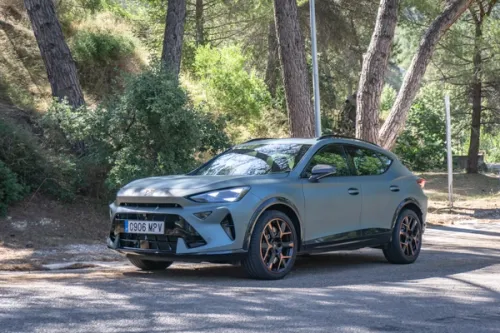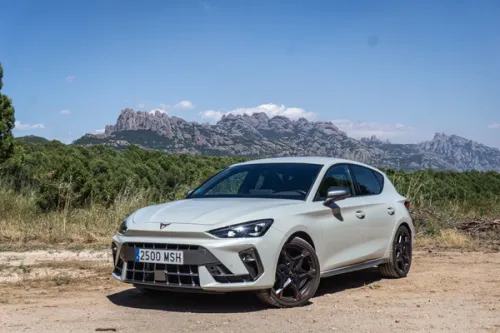MINI E gets Government green light for UK trial
BMW Group-led consortium is a winner in Technology Strategy Board £25m Ultra Low Carbon Vehicle Demonstrator competition.


The British government body that exists to promote business innovation in technology announced yesterday that a consortium led by BMW Group will be supported by a proportion of a £25m fund, enabling the MINI E to be introduced and tested on British roads by a mixture of private, corporate and public sector drivers before the end of 2009.
BMW Group's successful application to the UK Government's Technology Strategy Board followed an invitation for proposals outlining innovative, industry-led collaborative research projects involving ultra-low carbon vehicles.
[B]The MINI E UK Research Consortium[/B]
The MINI E UK Research Consortium, of which BMW Group is the lead partner, comprises several organisations which are based around Oxford and the South-East of England. All will play important roles in the collaborative field trial.
In addition to the BMW Group, the consortium includes an electric energy and infrastructure provider (Scottish and Southern Energy), an academic partner (Oxford Brookes University's Sustainable Vehicle Engineering Centre) and the South East England Development Agency (SEEDA) as well as Oxford City Council and Oxfordshire County Council.
Scottish and Southern Energy, the UK's leading generator of energy from renewable sources, will be responsible for providing the infrastructure in and around Oxford and other locations in the South-East of England by installing the private and public charging points that will be required to recharge the batteries in the MINI E test vehicles.
Oxford Brookes University, under the direction of Professor Allan Hutchinson who leads its Sustainable Vehicle Engineering Centre, will be responsible for undertaking scientific data analysis as well as conducting customer surveys to capture the subjective feedback from users of the MINI E test vehicles.
At the end of the trial, a comprehensive report documenting the main findings of the MINI E research project will be published. This will help inform those bodies seeking to create the political, technical and commercial framework necessary to enable sustainable mobility in a low carbon future to become reality.
[B]MINI E technology highlights[/B]
The MINI E's electric drive train produces a peak torque of 220 Nm, and power is delivered to the front wheels via a single-stage helical gearbox. This unique engine and transmission arrangement powers the MINI E seamlessly to 100 km/h in 8.5 seconds and on to an electronically-limited top speed of 153 km/h.
Based on the current MINI Hatch, the car is available as a two-seater. With 204 hp at the driver's disposal, performance is close to that of the MINI John Cooper Works.
The space normally inhabited by rear passengers is reserved for a lithium-ion battery. The heavy-duty battery delivers its power to an electric motor which is mounted transversely under the MINI E's bonnet.
This power unit is able to unleash its full thrust from a dead standstill and is complemented by its dynamic deceleration potential, which is directly coupled to the accelerator pedal.
The MINI E's lithium-ion battery can be plugged into all standard power outlets. Its charge time is strongly dependent on the voltage and amperage of the electricity flowing through the grid.
As with existing research projects in the USA and Berlin, users will be able to recharge a battery that has been completely drained within a very short period of time using a wallbox that will be supplied as standard with every MINI E. With 240V/32A, charging time for the car will be around four hours. There is also an intention to establish a network of public charging stations.
The wallbox will be installed in the customer's garage, enable higher amperage and thus ensure extremely short charging times. Wallboxes fully recharge batteries in just four-and-a-half hours. Only lockable garages or similar buildings will qualify as suitable power stations for the MINI E.
The MINI E's 1,465 kilograms is evenly distributed across the car. Modifications to the suspension system and the car's Dynamic Stability Control (DSC), adapted to the car's specific wheel loads, ensure safe and dynamic handling typical of MINI.
Production of all cars for the UK trial is underway at the company's Oxford and Munich sites. MINI's Plant Oxford will be responsible for manufacturing the entire vehicle on the standard production line, with the exception of the drive components and the lithium-ion battery.
The vehicles will then be transferred to a specially equipped manufacturing facility situated on BMW plant premises in Munich where the electric motor, battery units, performance electronics and transmission will be integrated.
[IMG]http://www.oneshift.com/showroom/uploadimages/resized-2009062502445626.jpg[/IMG]
[I](L to R) - Lord Drayson, Minister for Science & Innovation, Andy Hearn, General Manager, MINI UK, and Lord Adonis, Secretary of State for Transport[/I]
Credits: JRC


Get the Best Price for your used car
from 500+ dealers in 24 hours

- Convenient and Hassle-Free
- Consumer Protection
Transparent Process
With No Obligation








